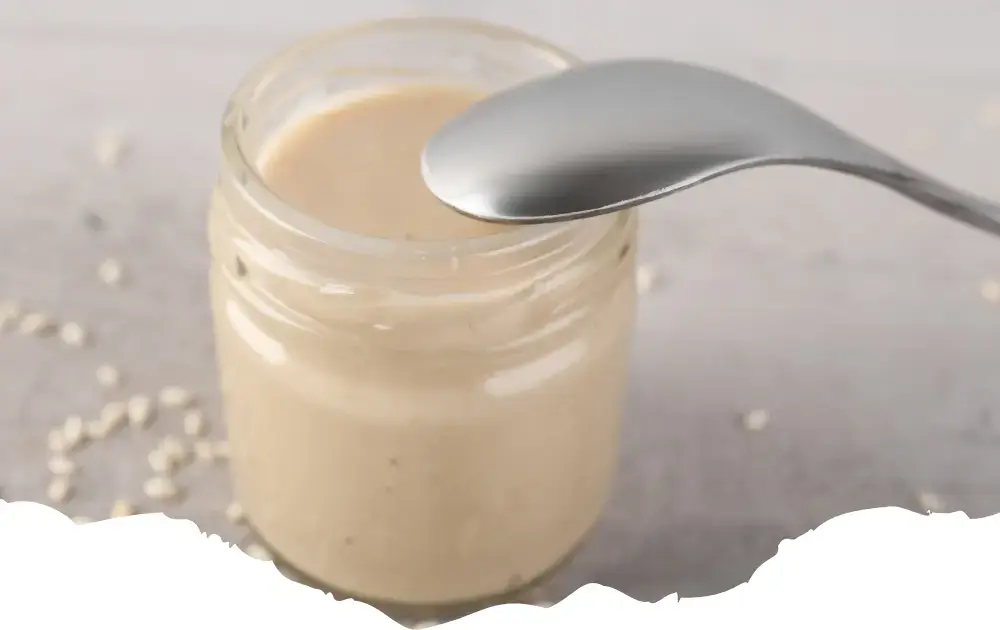Easy Homemade Tahini Recipe – Smooth & Nutty
Introduction to Homemade Tahini
Homemade Tahini is a versatile and flavorful paste made from ground sesame seeds, often used as a staple ingredient in Middle Eastern cuisine. Its rich, nutty flavor and creamy texture make it a popular addition to various dishes, including hummus, salad dressings, and dips. Making tahini at home is surprisingly simple and allows for customization to suit your taste preferences, ensuring a fresher and more aromatic product than store-bought versions.
History and Origins
The history and origins of tahini trace back thousands of years, making it one of the oldest condiments known to humankind. Originating in the Middle East, tahini has played a significant role in the culinary traditions of various cultures across the region. The word “tahini” itself comes from the Arabic word “tahana,” meaning “to grind,” a reference to the process of grinding sesame seeds into a paste.
Sesame seeds, the sole ingredient in traditional tahini, are believed to be one of the first oil-rich seeds known to humanity. Their cultivation dates back to ancient times, with historical records indicating their use in the diets of the ancient Egyptians, Babylonians, and Assyrians. Sesame seeds were highly valued for their oil, which was used for cooking, medicinal purposes, and even as a currency in some cultures.
The technique of grinding sesame seeds into a paste likely evolved as a means to preserve and consume sesame oil in a more versatile form. Tahini served as a nutritious and energy-rich food source, ideal for the hot climates of the Middle East where it originated. Its use quickly spread throughout the region, becoming a staple ingredient in many traditional dishes.
In modern times, tahini has transcended its regional origins to become a beloved ingredient worldwide. Its introduction to Western cuisines, particularly through the popularity of Middle Eastern dishes like hummus and baba ghanoush, has led to a growing appreciation for tahini’s unique flavor and health benefits. Today, tahini is celebrated not only for its rich history but also for its role in contemporary culinary practices, where it continues to inspire chefs and home cooks alike.
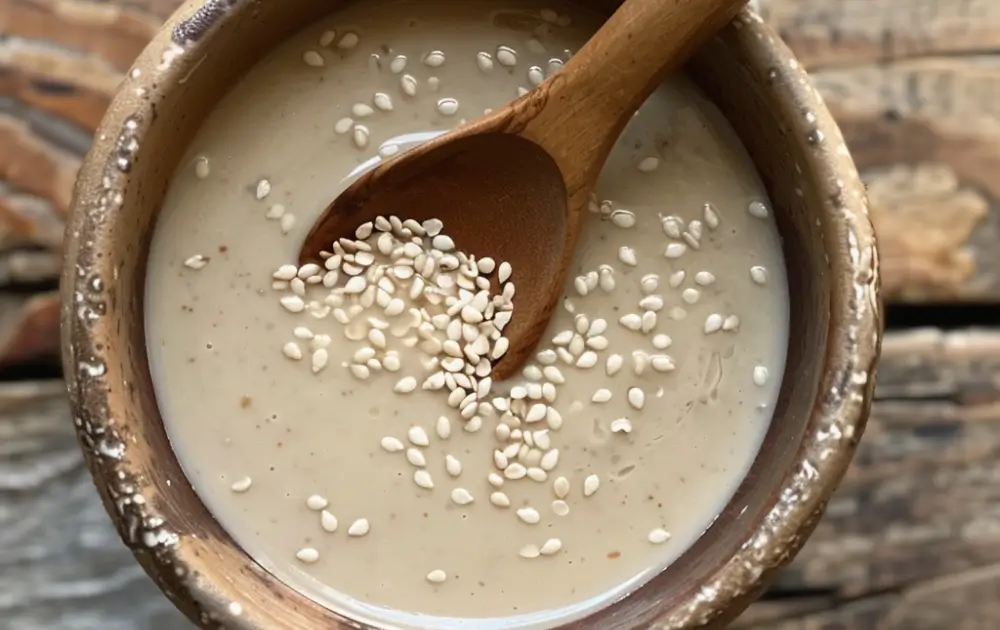
Selecting the Right Sesame Seeds
The key to a great homemade tahini is starting with high-quality sesame seeds. You can choose between hulled and unhulled seeds; hulled seeds yield a smoother, lighter tahini, while unhulled seeds produce a more nutrient-dense and slightly bitter paste. For a more pronounced sesame flavor, opt for lightly toasted sesame seeds, which can be done quickly in a dry skillet or in the oven.
Preparing the Sesame Seeds
To prepare the sesame seeds for making tahini, start by toasting them lightly. This step enhances their nutty flavor and makes the grinding process easier. Toast the seeds in a dry skillet over medium heat, stirring constantly to prevent burning, until they are lightly golden and fragrant. Alternatively, spread the seeds on a baking sheet and toast them in a preheated oven at 350°F (175°C) for about 5-10 minutes.
Grinding the Seeds
Once the sesame seeds are toasted and cooled, transfer them to a food processor or high-powered blender. Grind the seeds on high speed, scraping down the sides as needed, until they form a crumbly paste. At this point, gradually add a neutral oil, such as light olive oil or grapeseed oil, while continuing to blend. The amount of oil needed can vary, so add it slowly until you reach your desired consistency.
Achieving the Perfect Consistency
The perfect consistency for tahini is smooth and pourable, similar to a thin nut butter. Achieving this texture may require several minutes of blending and occasional pauses to prevent the appliance from overheating. If the mixture appears too thick, add a little more oil; if it’s too thin, you can blend in a few more toasted sesame seeds until you get it just right.
Customizing Your Tahini
Homemade tahini can be customized according to your taste preferences. For a touch of brightness, consider adding a squeeze of lemon juice. If you prefer a more savory flavor, a pinch of salt can enhance the natural taste of the sesame seeds. Experimenting with additional flavors, such as garlic or herbs, can also create unique variations of tahini to complement different dishes.
Storing Homemade Tahini
Proper storage is essential to maintaining the freshness and flavor of your homemade tahini. Transfer the tahini to an airtight container and store it in the refrigerator. Well-made and properly stored tahini can last for several weeks, ready to be used in your favorite recipes or as a delicious spread on its own.
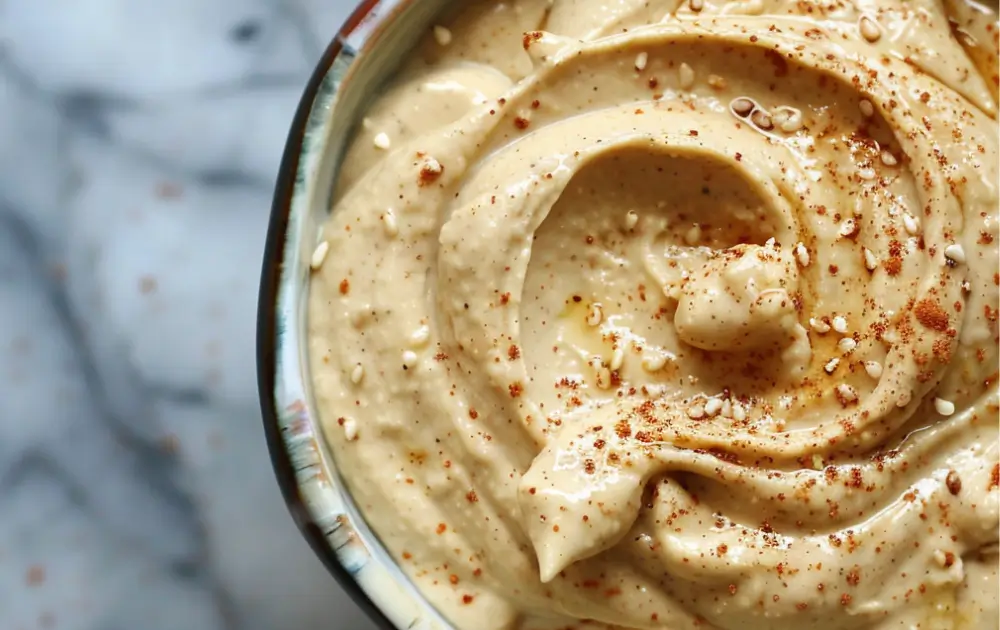
Incorporating Tahini into Your Cooking
Once you’ve mastered the art of making homemade tahini, the possibilities for incorporating it into your cooking are endless. Tahini serves as a creamy base for dressings and sauces, adding depth and richness to salads and wraps. It’s also a key ingredient in traditional hummus recipes, contributing to the dip’s smooth texture and nutty flavor. For a sweet twist, tahini can be used in baking, offering a unique alternative to nut butters in cookies and cakes.
Health Benefits of Tahini
Tahini isn’t just delicious; it’s also packed with health benefits. Being made from sesame seeds, it’s a good source of plant-based protein, healthy fats, and several important nutrients, including calcium, magnesium, and zinc. Incorporating tahini into your diet can contribute to heart health, reduce inflammation, and even support bone health, making it a nutritious addition to meals and snacks.
Tips for Perfect Tahini Every Time
Achieving perfect tahini requires a bit of patience and attention to detail. Ensure your sesame seeds are evenly toasted to avoid any raw or burnt flavors. When blending, give your food processor or blender breaks to prevent overheating, which can affect the taste and texture of the tahini. Finally, adjusting the amount of oil gradually ensures you reach the perfect consistency without making the tahini too thin.
Exploring Varieties of Sesame Seeds
While most tahini is made with white sesame seeds, exploring other varieties can introduce new flavors and colors to your dishes. Black sesame seeds, for example, offer a slightly different taste and produce a strikingly dark tahini that can add visual contrast to your recipes. Mixing different types of sesame seeds can also create a tahini with a more complex flavor profile, catering to those looking to experiment with their culinary creations.
Serving Suggestions and Pairings
Homemade tahini can elevate the simplest dishes with its rich, nutty flavor. Drizzle it over roasted vegetables, mix it into grain bowls, or use it as a dip for fresh bread and crudité. Tahini pairs exceptionally well with Mediterranean and Middle Eastern flavors, but its versatility means it can be adapted to suit a wide range of cuisines. Experimenting with tahini in different culinary contexts can help you discover new favorite ways to enjoy this delicious paste.
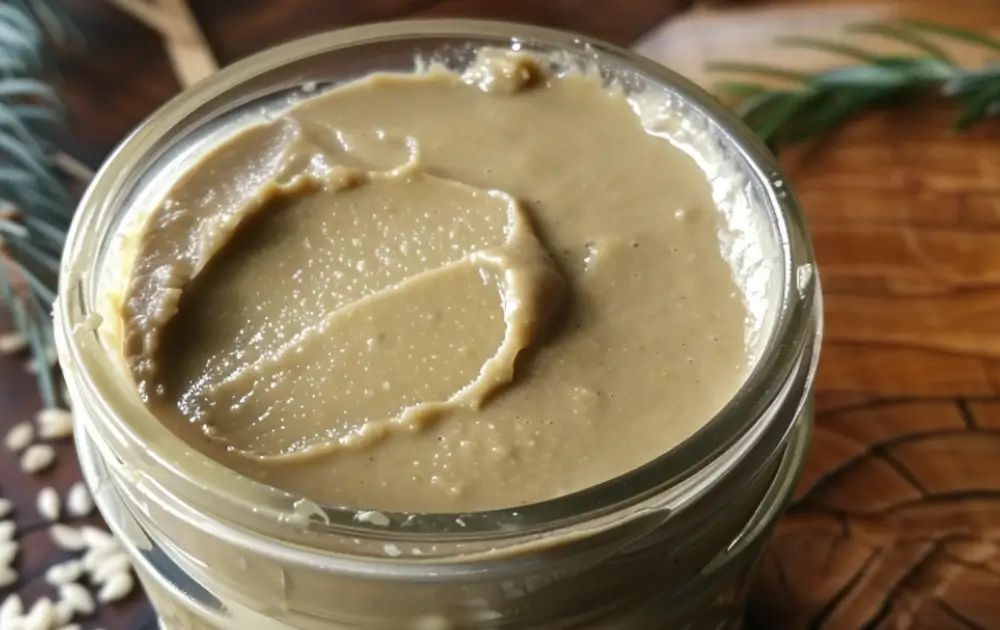
Exploring the Variations of Tahini
Tahini’s versatility extends beyond its traditional role in Middle Eastern cuisine, leading to a fascinating array of variations that cater to different tastes and dietary needs. These adaptations not only highlight tahini’s flexibility as an ingredient but also its ability to blend seamlessly into various culinary traditions.
Black Sesame Tahini
A striking variation of the classic tahini is made from black sesame seeds, offering a deeper, slightly smokier flavor compared to its white or beige counterpart. Black sesame tahini stands out visually with its rich, dark color, making it a dramatic addition to dishes. It’s particularly popular in Asian cuisine, where it’s used in both savory sauces and sweet desserts.
Flavored Tahini
Flavored tahini incorporates additional ingredients to create new taste profiles. Variants include lemon-infused tahini, which adds a citrusy brightness perfect for dressings and dips. Garlic tahini offers a robust flavor ideal for marinades and spreads. There are even sweet versions, such as chocolate or honey tahini, which transform the paste into a decadent spread for toast or a unique ingredient in baked goods.
Herb-Infused Tahini
Herb-infused tahini blends the creamy paste with fresh or dried herbs, such as parsley, cilantro, or dill, introducing a fresh, aromatic dimension. This variation is excellent for drizzling over grilled vegetables or incorporating into salad dressings, adding a burst of flavor and color.
Spicy Tahini
For those who enjoy a bit of heat, spicy tahini incorporates chili peppers, hot sauce, or ground spices like cayenne or paprika. This fiery version adds a kick to traditional recipes and can be adjusted according to spice tolerance, making it a customizable and versatile condiment.
Nut and Seed Tahini
While traditional tahini is made exclusively from sesame seeds, innovative variations include blending sesame with other nuts or seeds, such as almonds, cashews, or sunflower seeds. These combinations result in unique flavors and textures, offering a twist on the classic tahini while expanding its nutritional profile.
Each variation of tahini showcases the ingredient’s adaptability and potential for creativity in the kitchen. Whether you’re sticking to traditional recipes or exploring new flavors, tahini’s rich history and versatility make it a staple ingredient worth experimenting with.
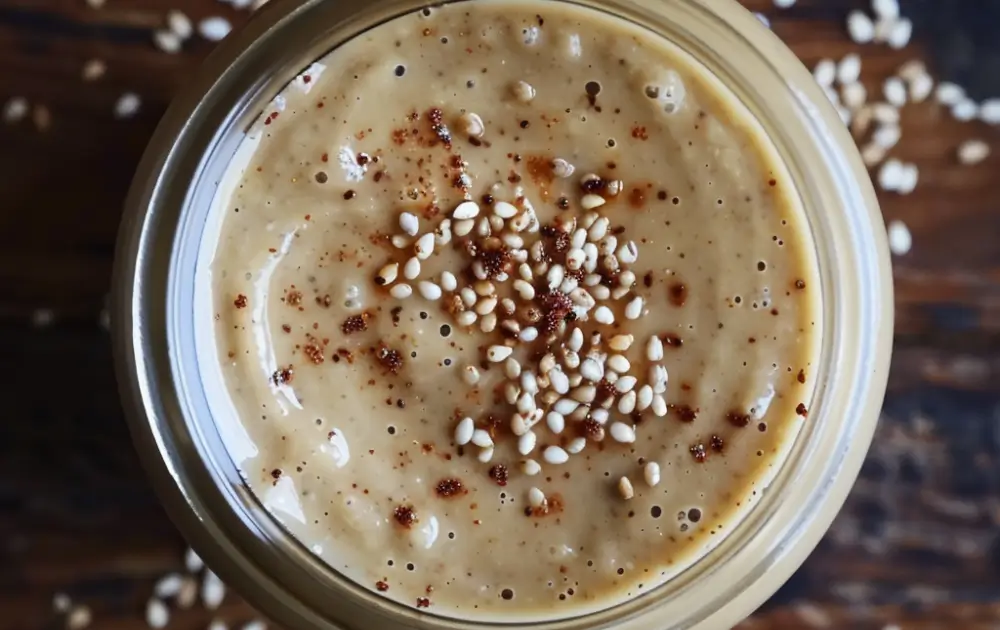
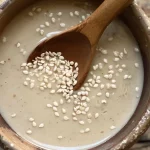
Homemade Tahini
- Total Time: 25 minutes
- Yield: 1 cup
- Diet: Gluten Free
Description
Tahini is a smooth, creamy paste made from ground sesame seeds. It’s a key ingredient in many Middle Eastern dishes, known for its rich, nutty flavor. Homemade tahini is easy to make and can be used in a variety of recipes, from dressings and dips to baked goods.
Ingredients
Instructions
Notes
- The amount of oil required can vary depending on the freshness of the sesame seeds and the desired consistency.
- Store tahini in an airtight container in the refrigerator for up to a month.
- If your sesame seeds are not breaking down, try increasing the amount in the bowl or using a higher-powered processor.
- Prep Time: 15 minutes
- Cook Time: 10 minutes
- Category: Condiment
- Method: Blending
- Cuisine: Middle Eastern
Nutrition
- Calories: 89
- Fat: 8g
- Carbohydrates: 3.2g
- Fiber: 1.6g
- Protein: 2.6g

